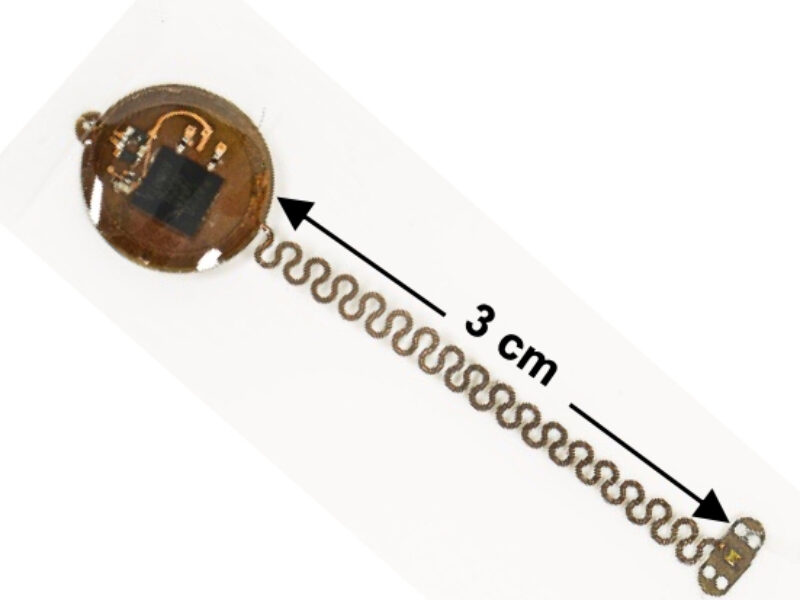
Tiny battery-free pacemaker is wirelessly charged
Researchers in the US have developed and tested for the first time in vivo a miniaturized, battery-free pacemaker that supports optical and electrical multisite stimulation.
The device, developed by Prof Igor Efimov in the George Washington University School of Engineering and Applied Science, is powered wirelessly, reducing the size by eliminating the battery and allowing several to be used around the heart.
“We can maintain heart rate for a long time, which sets the platform for future exploration of our designs of flexible and stretchable electronics,” said Prof Efimov.
Researchers in Texas have also been working on wireless pacemaker technology.
Sudden cardiac death is the largest cause of natural death in the US with over 300,000 adult deaths each year and the researchers hope this new device will help decrease the number of these deaths by using a pacemaker in new ways. There is also no way to change the battery in a traditional pacemaker, meaning the entire device needs to be replaced when a new battery is needed.
By decreasing the size of a wireless pacemaker to about the size of a coin and weghing just 110mg, the goal is for doctors to one day place several pacemakers across the heart. Having multiple wireless pacemakers on the heart at once can improve the quality of resynchronization therapy as the devices can be programmed externally to synchronize cardiac excitation and contraction, thus making the devices more efficient, effective and comfortable for patients.
The research, published in Nature Communications, was a collaboration between Dr. Efimov’s lab and the School of Medicine and Health Sciences’ Department of Surgery. The flexible electronics were designed by John A. Rogers at Northwestern University. The layered construction uses a polyimide (PI) flexible circuit substrate with a stimulation electrode consisting of platinum-coated copper. A conformal coating of parylene C serves as an encapsulation layer. It also includes an LED for optical stimulation of the heart.
Next: Wireless powering the pacemaker
A secondary antenna on the pacemaker harvests radio frequency (RF) power from a primary antenna that encircles the experimental arena via magnetic resonant coupling. Power is harvested via a single wave rectifier that includes a matching capacitor for tuning the system to an operational frequency of 13.56 MHz. The harvested power, conditioned by a linear regulator, provides a stable supply to a microcontroller that controls electrical and optical stimulus. The power is limited by a Zener diode that caps voltages exceeding 2.2 V to avoid damage to the surrounding tissue.
Although the technology has been tested in tissue for the first time, the system is still several years away from being tested in humans, said Efimov, but all the materials used in the device are FDA approved.
Related pacemaker articles
- PIEZOELECTRIC CANTILEVER GENERATES POWER FOR HEART IMPLANT
- HARVESTING THE HEART’S MOVEMENT TO POWER IMPLANTS
 If you enjoyed this article, you will like the following ones: don't miss them by subscribing to :
eeNews on Google News
If you enjoyed this article, you will like the following ones: don't miss them by subscribing to :
eeNews on Google News




